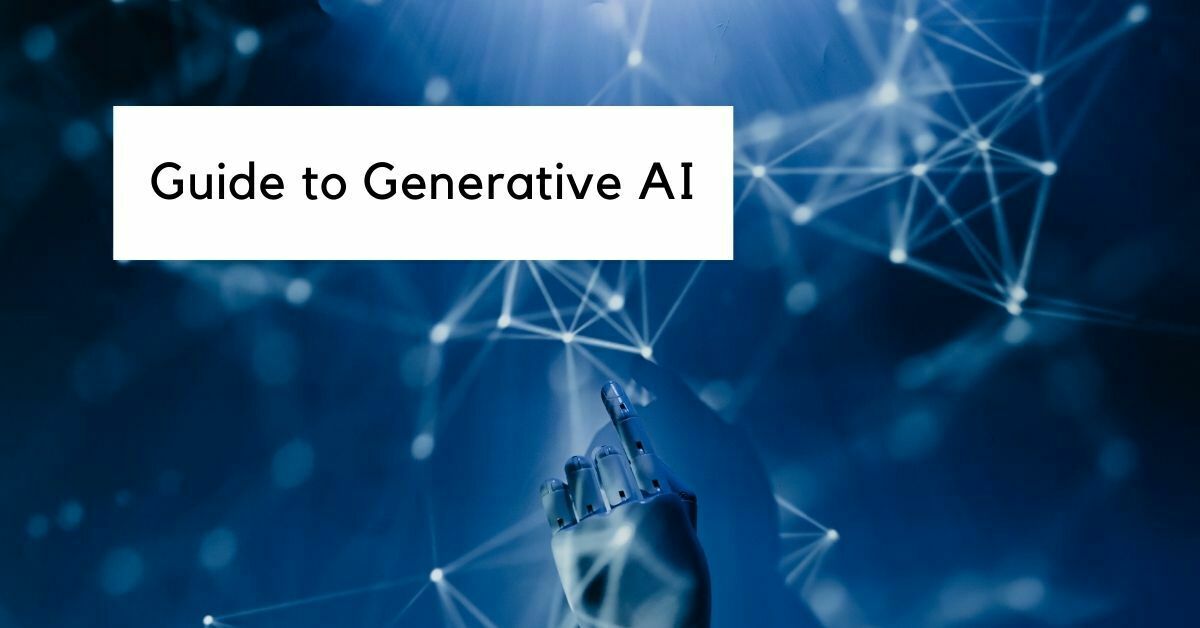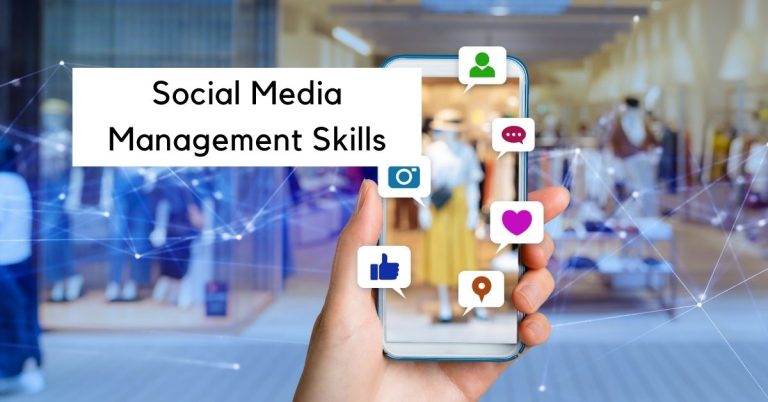Generative AI: What It Is and What You Need to Know About It
Generative Artificial Intelligence (AI) is an exciting technology that will revolutionize content creation. Generative models use algorithms to generate outputs from existing data, such as images, text, or sound. Generative AI technology makes content based on patterns learned from the existing data.
ChatGPT is a famous example of Generative AI, and it creates text-based content like blogs and long-form content. Generative AI tools are innovative, and industries are realizing their potential, although the potential risks can’t be ignored. This post will discuss Generative AI’s far-reaching implications, establish the basics, and talk about what it can and can’t (or shouldn’t) do.
Why is it Important to Know About Generative AI Systems?
Generative AI is a cutting-edge branch of artificial intelligence that reshapes how we interact with technology. At its core, Generative AI models refer to systems that create new content, whether an article or a piece of music. These AI models learn patterns from training data and generate original creations. But why should you care about Generative AI models?
For starters, it’s already impacting your lives – from AI copywriting tools to AI art generators. Understanding Generative AI solutions help us navigate the increasingly digital world and empowers us to leverage these powerful tools to enhance our creativity, productivity, and decision-making processes.

Source: Image generated using Midjourney
What is Generative AI?
A generative model is trained on data sets that require massive compute power; they can predict the next word, pixel, or sound using algorithms imprinted in their structure. Most people also know it as the technology behind writing tools and image or music generators. But what does this mean for the average person?
Generative AI is likely already part of your life; it’s the technology that powers your ChatGPT-like chatbots, image generators, and writes articles in minutes. By understanding what Generative AI models are, you can appreciate the digital experiences it enables in our lives.
How is Generative AI Different From Conventional AI Models?
Generative AI is trained with complex machine learning models on massive data sets, allowing the AI to learn patterns, structures, and nuances. Once trained, these new models can generate content similar to the training data.
Compared to the early stages of conventional AI models, generative AI stands out in its ability to generate novel data from content that wasn’t originally part of the training data set. Conventional AI models identify patterns and complete tasks like fraud detection, but generative AI is much more creative in its capabilities.
Think of it like this: if traditional AI is like a cover band, playing songs precisely as they were performed, then generative AI is like a songwriter, using inspiration from those original songs to create brand-new tunes. From writing articles to analyzing data to generating realistic human speech, generative models are expanding what machines can do.
How Does Generative AI Work?

Source: Image generated using Midjourney
AI, machine learning, neural networks – are used interchangeably, especially when companies are marketing their products, but they’re not the same. Generative AI systems are complex and can even learn how to replicate human speech patterns or create realistic images. At its core, generative models are meant to mimic human creativity and accomplish tasks like image generation or blog writing.
They work by taking in raw data as input and extracting patterns from it to form a model, which then generates new content. This complexity is difficult for even the most tech-savvy user to understand, but we can break them down into building blocks. Generative models use conventional AI, Natural Language Processing (NLP), Deep Learning, and Machine Learning (ML) to generate new content.
Artificial Intelligence
Conventional Artificial Intelligence teaches machines to learn from data, mimic human behavior, or accomplish tasks efficiently. Whether you call it “classical AI,” “analytical AI,” or conventional, these tools enable your email to filter out spam and allow your map apps to suggest the fastest routes. Imagine taking this concept further where AI creates something new?
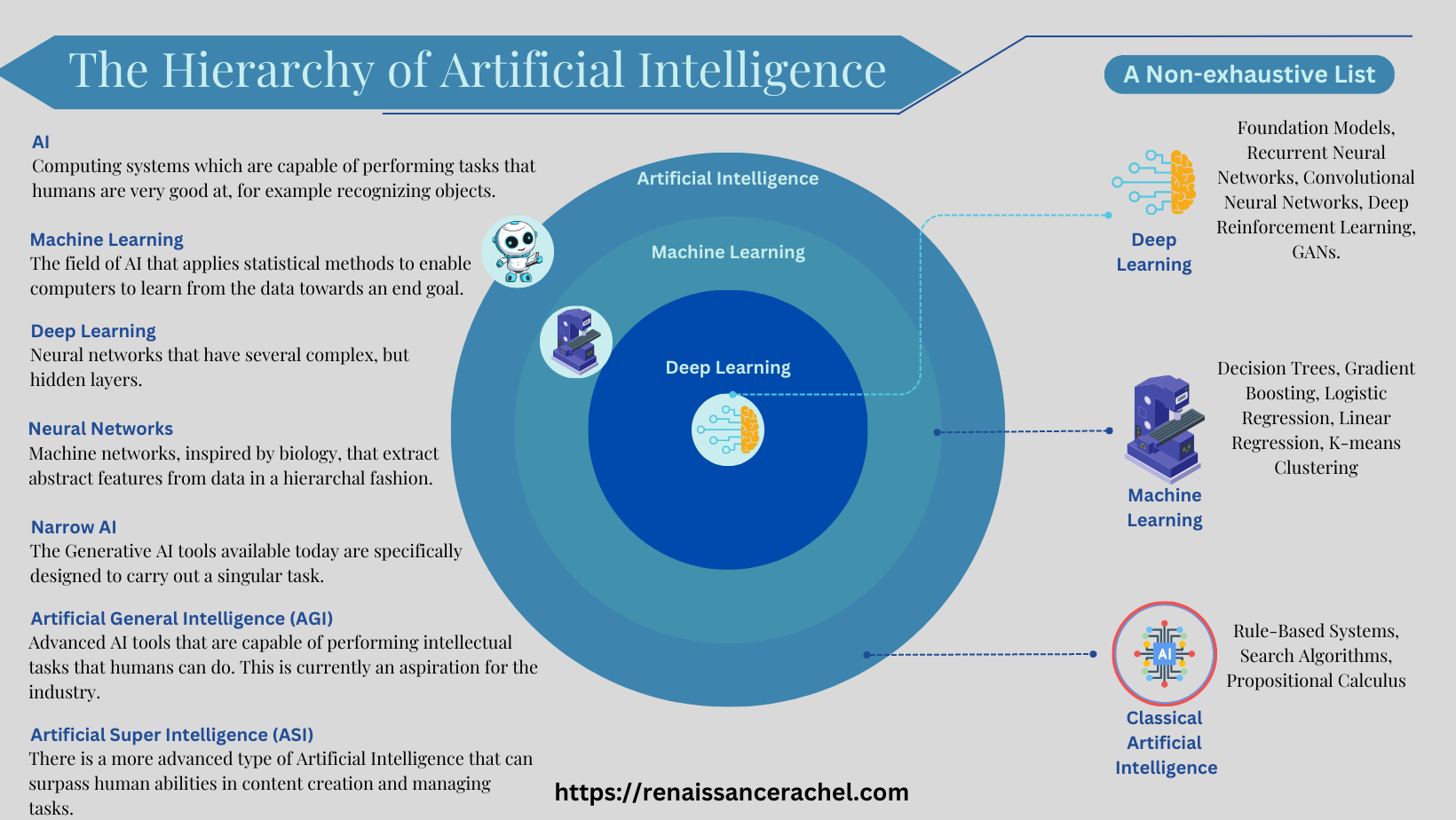
Source: Image created in Canva Pro
Using the graphic above, you can see that generative models use the foundations of conventional AI, but since all of the concepts surrounding Generative AI solutions overlap, we need to distinguish between them. Deep Generative models produce content and add an extra layer of creativity using intelligent algorithms trained on trillions of parameters. Understanding Generative AI helps us appreciate how our interactions with AI are becoming dynamic and personalized.
Natural Language Processing
NLP is a branch of AI that deals with the interaction between computers and human language. It’s why your voice assistant can understand your commands or how your email can suggest quick replies. This advanced technology leverages the power of NLP to understand human language and generate new, coherent, and contextually relevant sentences. From writing emails to crafting social media posts, Generative AI uses NLP to make digital interactions more efficient, personalized, and engaging.
Machine Learning
Machine learning mimics human intelligence and is distinguished from symbolic AI, which uses rule-based systems with if-then conditions. Before ML, developers taught computers about every factor in the decision-making process, which is time-consuming and limited. As a form of AI, ML makes predictions based on training data fed to the models.
ML algorithms can work using several training methods:
- Unsupervised Learning – Training where the system is tasked with determining data patterns.
- Supervised Learning – Training includes data with the pattern or “answer” within it.
- Reinforcement Learning – Training requires an algorithm to learn by trial and error.
Machines learn through these three methods but, some argue that the development of ML was made possible by our advancements in complex data and the quantities of data we have collected. Examples of ML algorithms used for classification and regression include:
- Linear regression
- Logistic regression
- Decision trees
- Support vector machines
- And more
Within machine learning, there’s a particular model called a neural network. These are designed to mimic the human brain, with layers of interconnected “neurons.”
Deep Learning
As a subset of ML, Generative AI utilizes Deep Learning, multi-layered neural networks inspired by the human brain. Neural networks can learn from data, identify patterns, generate new information, or draw similar conclusions to humans. Neural networks can be:
- Convolutional Neural Networks (CNNs) are commonly used for image recognition in computer vision.
- Recurrent Neural Networks (RNNs) are commonly used for text generation.
- Generative Adversarial Networks (GANs) are commonly used for image generation.
Since neural networks are inspired by the human brain, they can also classify information. Each neural network’s layers function as filters that progress from a general to a specific level, enhancing the likelihood of generating precise outcomes. The human brain works similarly; when it receives new information, it compares it with familiar objects.
Deep neural networks also use the same concept. Artificial neural networks have unique capabilities to perform the same tasks as classical algorithms; the opposite is untrue, meaning that DL models can solve problems that classical models can’t.
Foundation Models
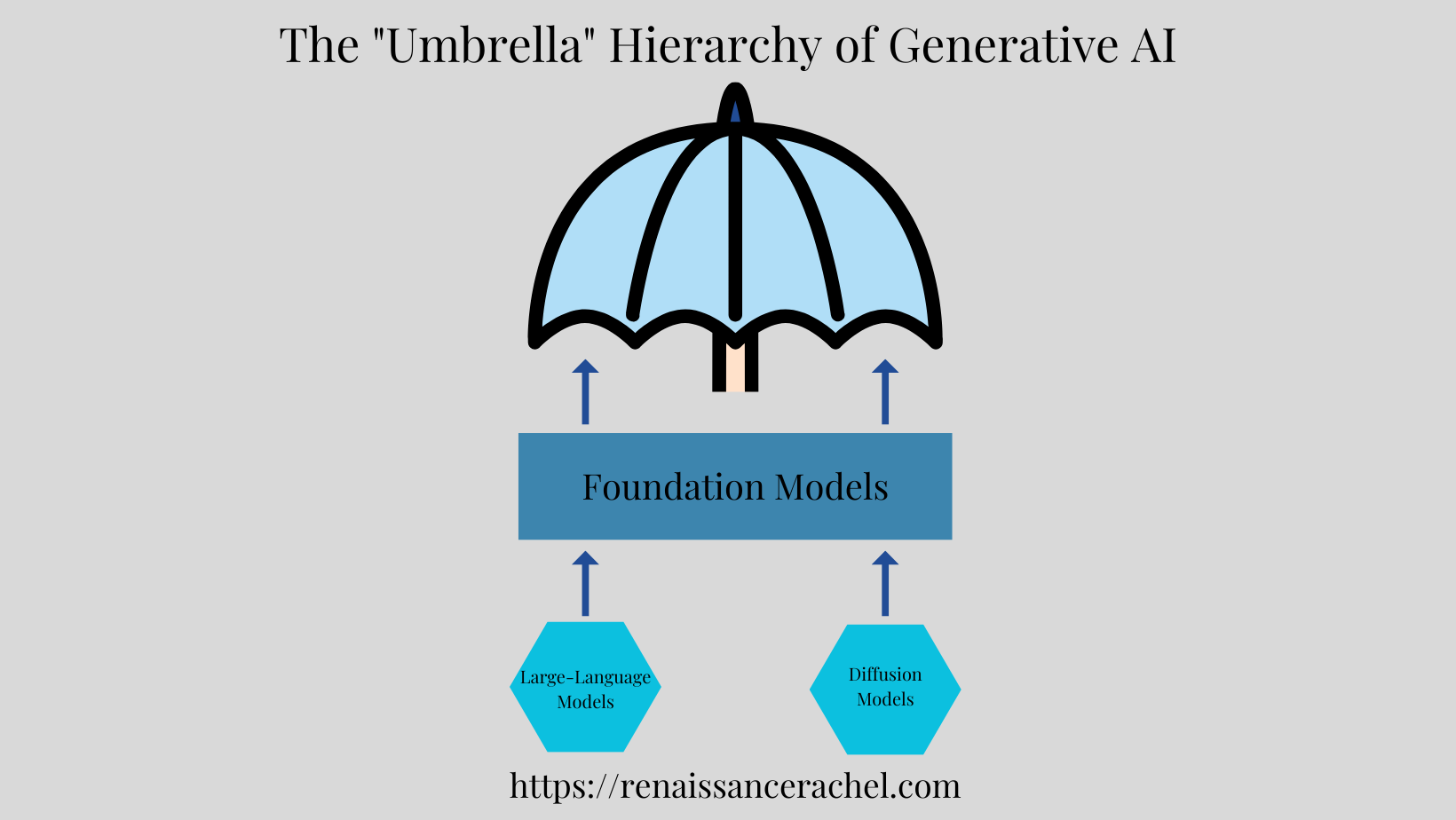
Source: Image created in Canva Pro
The Stanford Institute for Human-Centered Artificial Intelligence first popularized the term “foundation models” during their earlier AI research. We train AI models with vast amounts of unlabeled data before performing tasks. Once trained, these models require minimal fine-tuning to adapt them for multiple tasks.
Those interested in AI see these models’ potential in imagery and language through GPT-3 and DALL-E 2.0, respectively. These models are foundational because they form a strong base for many AI applications. Using self-supervised and supervised learning, an AI model can apply its learned knowledge to one situation or another. It’s like learning to write blogs; then, with little effort, you can write long-form articles and eBooks.
A foundation model can be expanded into other content domains due to their expansive data set and ability to adapt to a variety of tasks; anyone can use generative AI to create images, written content, and even voiceovers. Large Language Models (LLMs) are a type of foundation model.
How Generative AI Models Can Be Developed
Generative AI models are incredibly versatile, but combining them creates even stronger models.
Transformer-based models
Transformer-based models, for example, consistent of a flexible architecture that enables these large language models to recognize patterns and relationships in text that neural networks could not do previously (or it took FOREVER).
GANs
GANs are like an artist and art critic rolled into one, meaning the model uses two neural networks that compete. The artist part of the GAN creates new content, while the critic part evaluates how realistic it is, helping the artist improve over time.
Variational Autoencoders
Variational Autoencoders, or VAEs, are generative models that use a neural network to learn the underlying data structure. Once it understands this structure, it can generate new data similar to the original input data. Variational Autoencoders are great at creating content in a controlled way, like creating images of faces with specific features.
Multimodal Model
Multimodal Models can interpret and generate different data types, like text and images. These models are versatile and can even create videos or 3D animations. Multimodal models are gaining traction, and create voice assistants and virtual worlds.
Applications for Generative AI Tools
Generative AI model isn’t just for software development companies – it makes waves across various industries. In the healthcare sector, generative AI creates realistic simulations for training purposes or to predict patient outcomes based on medical records. The entertainment industry uses it to generate new music and scripts for TV shows.
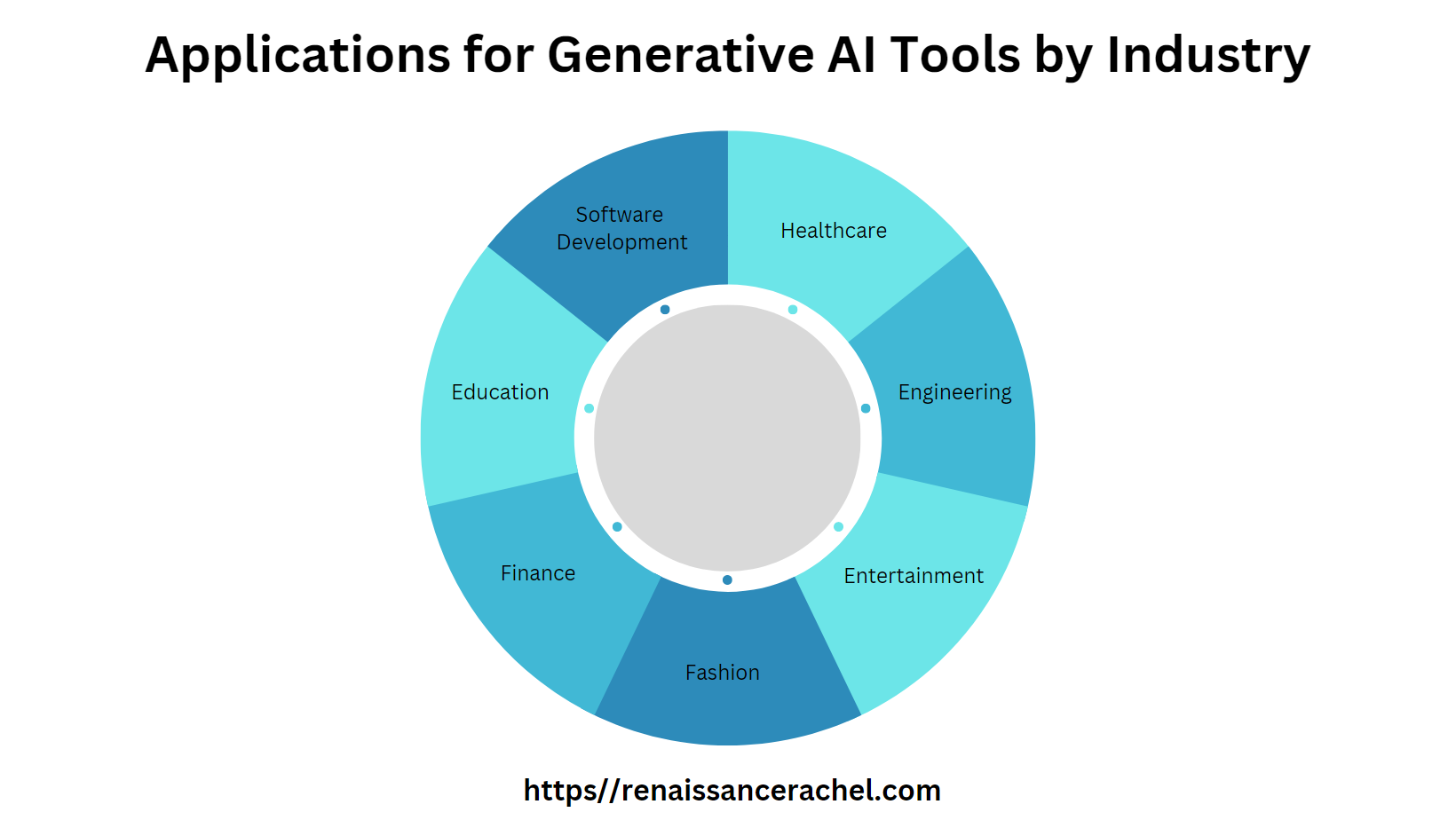
Source: Image created in Canva Pro
In the financial world, generative AI improves operations efficiency, enhances data analysis, promotes scalability and adaptability, and delivers critical insights. Generative AI analyzes intricate financial data and detects patterns or anomalies humans fail to identify. Companies need to scale quickly to survive, and Generative AI assists with the growing volume of financial data and reporting needs.
Businesses can handle increased reporting demands while the technology adapts to changing requirements. AI-generated financial reporting narratives provide timely insights to stakeholders, assisting with strategic decision-making and risk assessments.
Examples of Generative AI Tools
Using Generative AI is shaking up the business world. For instance, marketing teams can use Generative AI for engaging ad copy or social media posts, saving time and sparking creativity. In customer service, AI chatbots can handle a range of queries, freeing up human agents for more complex tasks.
Generative AI is a game-changer for content creators, helping them with articles, blog posts, or even entire books. And let’s not forget about analyzing data – Generative AI can help businesses understand trends in proprietary data to make predictions and drive strategic decision-making. Examples of Generative AI tools include:
- AlphaCode – A transformer-based language model that has 41.4 billion parameters. AlphaCode provides training in several programming languages, including C#, Ruby, Scala, Java, JavaScript, PHP, and Go, and is proficient in Python and C++.
- Synthesia – This is a platform or tool for creating videos powered by AI that produce high-quality videos quickly and easily. It’s also SOC 2 and GDPR compliant.
- Jasper.ai – A Generative AI platform that assists creators in overcoming writer’s block, producing unique imagery, and repurposing content into diverse formats and styles.
The adaptability of Generative AI can save time and money while convincing users to create unique content. Still, Generative AI is not without its flaws.
Dangers of Generative AI
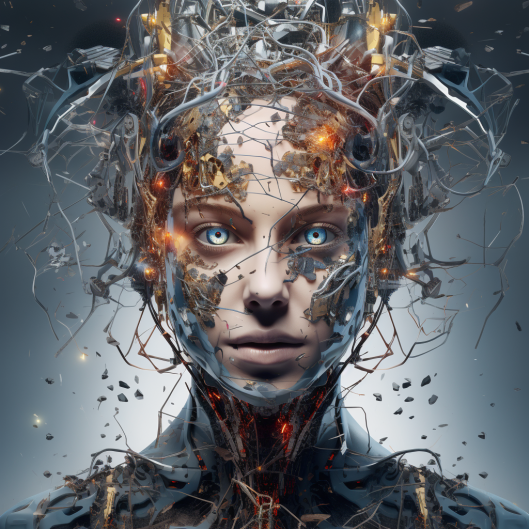
Source: Image generated using Midjourney
While the benefits of Generative AI involve many exciting applications, it has many potential pitfalls.
Spreading Misinformation
One danger with generative AI is the risk of spreading misinformation that fuels confusion and mistrust. Because Generative AI can create outputs similar to human-generated content, fake news, and deepfake videos are hard to distinguish from real ones. So while they sound extremely convincing, we must stay vigilant about their use and promote transparency and ethics.
Generative AI Lacks a Moral Code
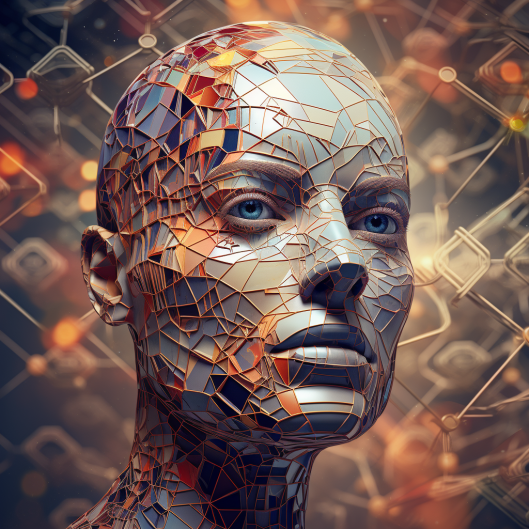
Source: Image generated using Midjourney
Generative AI, despite its content creation capabilities, lacks a moral code or consciousness. It generates content without understanding the ethics of what it’s creating. For instance, an AI might generate a humorous joke without understanding why it’s funny or create something offensive without realizing its inappropriate. AI doesn’t have feelings, beliefs, or a conscience.
It’s simply following algorithms and learning from the data it’s been fed. Generative AI is just software code that doesn’t possess a moral compass. We must guide AI’s creativity with our ethical values.
Address the Dangers and Limitations of AI With Ethical Guidelines
As exciting as Generative AI is, we must address its potential dangers and limitations with ethical guidelines; these guidelines enable responsible usage by all. For instance, AI developers should strive for transparency, making it clear when AI has generated content. They should also aim for fairness, removing AI systems that perpetuate biases.
Privacy is another crucial aspect, as AI often handles sensitive data. If something goes wrong, accountability mechanisms should be in place to determine responsibility. Explainable AI (XAI) covers all of these principles. Explainable AI refers to methods explaining how and why an AI system makes a conclusion, fostering transparency, understanding, and ethics.
Final Thoughts

Source: Image generated using Midjourney
Generative AI is revolutionizing content creation; we can consistently generate new ideas more efficiently and even explore artistic avenues we might never have considered. Whether writing a short story or designing a new product, AI offers to push our creativity to new heights. But remember, it’s still just a tool.
The future of creativity isn’t just about AI; it’s about how we safely integrate AI into our human ingenuity. As an exhilarating frontier in technology, we can understand the benefits of Generative AI. It’s like a vast ocean of possibilities, teeming with potential to revolutionize multiple facets of our lives.
Yet, akin to any mighty force, it comes with its share of risks. The specter of an intelligence explosion, unforeseen consequences that could radically alter our society under the banner of ‘progress,’ and even the daunting prospect of human extinction are realities we must grapple with. As we innovate in this exciting domain, we must tread cautiously, acknowledging human feedback, by maintaining the balance between technological advancement and our way of life.

